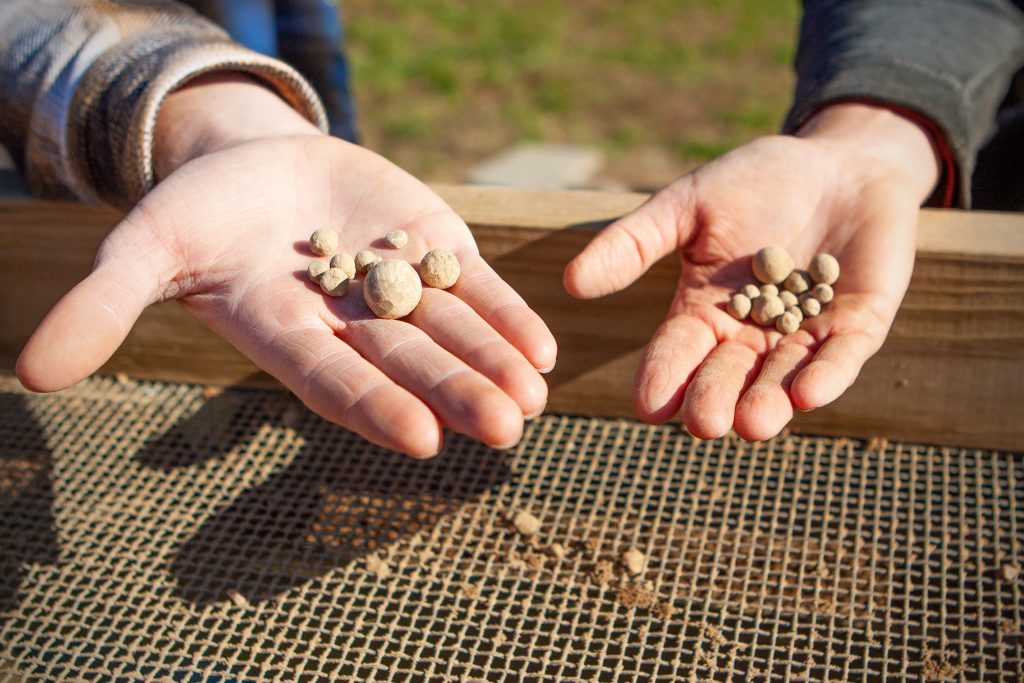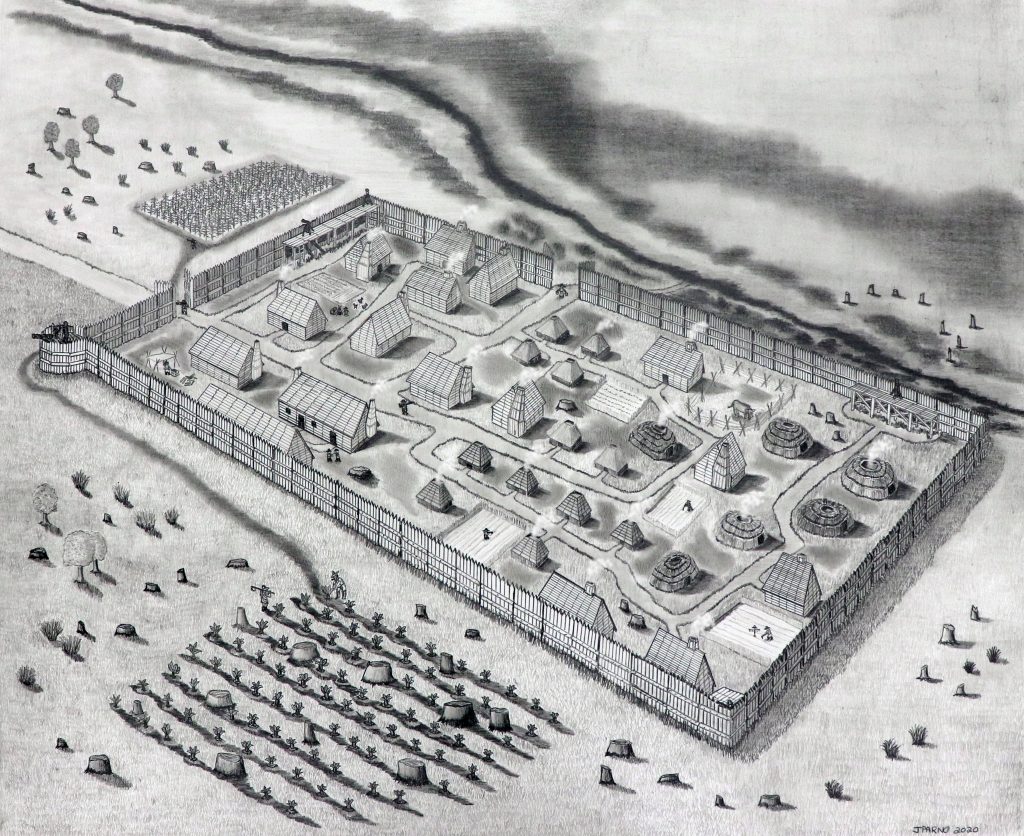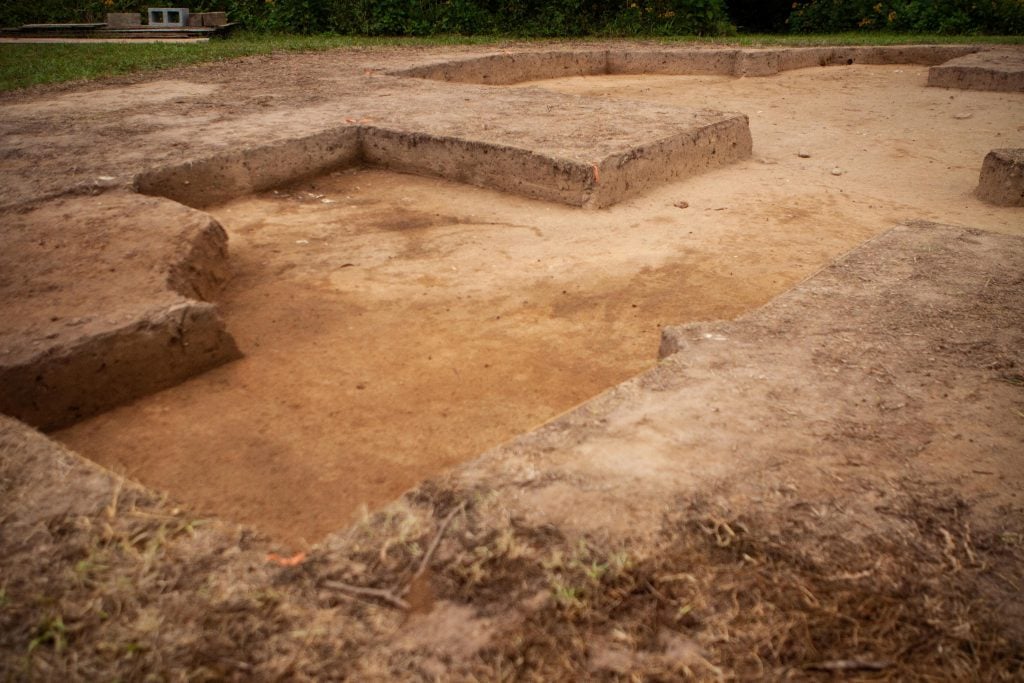Archaeology & History
Archaeologists Have Discovered the Lost Ruins of Maryland’s Earliest Colonial Settlement
Established in 1634, St. Mary's Fort was the fourth permanent English settlement in North America.

Established in 1634, St. Mary's Fort was the fourth permanent English settlement in North America.

Sarah Cascone

Archaeologists in Maryland have discovered the lost site of St. Mary’s Fort, the state’s first settlement. Built in 1634, the 387-year-old defensive garrison was just the fourth English settlement in North America, after Jamestown, Virginia, founded in 1607, and Massachusetts’s Plymouth in 1620 and Massachusetts Bay in 1630.
“This is our moment,” Travis Parno, director of research and collections at preservation organization and living history museum Historic St. Mary’s City, told the Washington Post. “This is the earliest colonial archaeological site in Maryland. This is it.”
Experts have been hunting for the site for 90 years, but even with some 200 excavations over the last three decades, they had been unable to identify any archaeological evidence of the fort. (The original site of Jamestown had been similarly lost until archaeologist William M. Kelso found it in 1994.)
But by scanning the area with magnetic susceptibility, magnetometry and ground-penetrating radar in 2019, archaeological geophysicist Tim Horsley was able to finally identify the outline of the settlement. (The announcement of the find was delayed a year due to the pandemic.) The scans revealed the imprints of former postholes and traces of building foundations.

Illustration of St. Mary’s Fort as it likely appeared during its construction in 1634 fort by Jeffrey R. Parno. Courtesy of Historic St. Mary’s City.
Subsequent digs have uncovered a brick cellar believed to be from a guardhouse or storehouse, a musket trigger guard and more than 60 pieces of lead musket shot, and a 4,500-year-old quartzite arrowhead. The fort was occupied for eight or nine years.
“Finding the location of Maryland’s original settlement is truly exciting news for our state and will give us an opportunity to reconnect with our pre-colonial and early colonial years,” said Governor Larry Hogan in a statement.
The first English settlers in Maryland arrived on board the ships the Ark and the Dove in March 1634. There were about 150 of them, largely Roman Catholics in search of religious freedom. The area where they built their new home was already occupied by the Indigenous Yaocomaco tribe, who were linked to the Piscataway chiefdom.

Excavations at the site of St. Mary’s Fort. Photo courtesy of Historic St. Mary’s City.
Evidence suggests that St. Mary’s Fort may have incorporated preexisting Native American structures, but it is unclear if any Indigenous people lived in the fort alongside the settlers.
The announcement of the discovery was timed ahead of Maryland Day on March 25, which celebrates the foundation of St. Mary’s, and will be followed by the launch of “People to People: Exploring Native-Colonial Interactions in Early Maryland,” a new project from Historic St. Mary’s and members of the Piscataway community.
“There are a lot of cross-colonial and cross-cultural things that we can learn,” Parno told NBC News. “Not just how we compare to other places, but how the colony expanded and those really complicated social and political relationships between Native populations and the colonists, and also between different groups of Native peoples.”